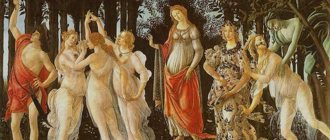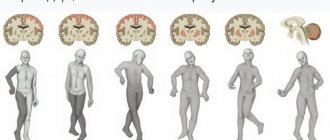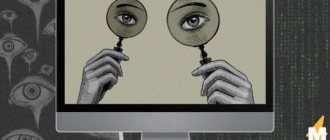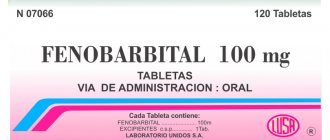Topic 13. Political leadership
1. Political leadership is a symbol of community and a model of political behavior of a group (groups), capable of realizing its (their) interests with the help of power. Leadership is a phenomenon of power, the ability of one person to force others to do something.
2. The main functions of political leadership include:
- determination and formulation of the interests of social groups, goals of social and political activity, identification of ways and methods of realizing interests and achieving goals (program function);
- integration of society, unification of the masses (integrative function);
- finding and making optimal political decisions (managerial function);
- social arbitration and patronage, protecting the masses from lawlessness, arbitrariness of the bureaucracy, maintaining order in society (protective function);
- communication between the authorities and the masses, preventing the alienation of citizens from the political leadership (communicative function);
- initiating renewal, generating optimism and social energy, mobilizing the masses to realize political goals (mobilization function);
- legitimation of the political system (legitimation function).
3. Theories of political leadership.
theory of “personality traits” (moral maturity, ability to influence others, integrity of character, social courage and enterprise, insight, independence from strong harmful impulses, willpower, absence of unnecessary worries), (or intelligence, adaptability, ability to influence people, extroversion , sensitivity and ability to understand others).
situational theory (in extreme conditions of the functioning of society, a political leader of a national scale will need such qualities as:
- the ability to formulate new creative goals, heuristic programs and ideologies in conditions where old guidelines are lost, society is split, apathy and anarchy reign in it;
- the ability to personify fundamental national values for a specific historical period;
- willingness to go beyond bureaucratic procedures when making decisions in extreme situations;
- the ability to connect basic current interests with the history of the country, the traditions of modern and previous generations;
- the art of creating a fundamentally new model of behavior and thinking that will be replicated and spread throughout society;
- the ability to instill faith and optimism in a nation, to help it overcome uncertainty, guilt and inferiority complex).
theory of constituents (the decisive role of the leader’s followers, “the king is played by his retinue”).
psychological theories of leadership (three main directions: psychoanalytic, motivational and applied).
Leadership should be viewed as a multidimensional concept.
4. Typology of political leaders.
M. Weber. Traditional leadership (based on traditions, customs and the habit of followers to obey), charismatic leadership (based on belief in the extraordinary, outstanding qualities of the leader) and rational-legal (bureaucratic) leadership (exercised on the basis of laws and within the framework of laws).
M. Hermann divides leaders by image into “standard bearers”, “ministers”, “merchants” and “firemen”. The “standard bearer” leaders strive to realize the “great dream” and change the political system. The image of a “servant” is formed by a politician who seeks to act as a spokesman for the interests of his followers. “Merchant” is distinguished by the ability to convince people and “sell” their ideas to them. And finally, the “firefighter” leader responds to the extreme events and problems generated by the situation, the urgent demands of the moment. Extreme situations are required to demonstrate the qualities of this type of leader. In actual political practice, most leaders use all four images of leadership in different orders and combinations.
Based on the emotional attitude of his followers towards the leader, S. Gibb formulates three types of leaders:
1. “patriarch”, towards whom members of society experience both feelings of love and fear;
2. “tyrant”, in relation to whom the feeling of fear dominates;
3. the “ideal” leader, towards whom most social groups have sympathy.
An interesting approach to the typology of leadership is offered by the French scientist J. Blondel. Its classification is based on two criteria: the attitude towards traditions and innovations and the scope of the leaders’ sphere of activity.
Types of political leadership according to J. Blondel
| Dimension 2 | Dimension 1 | ||
| Preservation existing provisions | Moderate changes | Large scale Changes | |
| Types of Political Leaders | |||
| Wide scope of activity | "Rescuers" (W. Churchill, Charles de Gaulle) | "Paternalists" and "populists" (O. Bismarck, I. Stalin) | "Ideologists" (Mao, A. Hitler) |
| Moderate scope of activity (system aspect) | "Soothing" (D. Eisenhower) | "Revisers" (R. Reagan, M. Thatcher) | "Reformers" (F. Roosevelt) |
| Narrow field of activity | Managers (ministers who deal with day-to-day issues) | Improvers (ministers who modify some aspect of policy) | Innovators (lay the foundation for a new policy, for example, land) |
5. Leadership styles are a set of techniques and methods of activity of a political leader, the nature of interaction with group members and followers.
Traditionally, there are three leadership styles: authoritarian, democratic and non-interfering.
Leaders are not born, leaders are made.
Leaders are not born, leaders are made. No one comes into this world as a natural leader. A person becomes a leader when he, first, decides to become a leader, and second, acquires the skills necessary to “get extraordinary results out of ordinary people.” Among the infinite number of people, at the very bottom are those people who have no idea what is happening.
And at the very top are those 1-2 percent of people who are the spark plugs in the engines of our change. Each of us exists at a certain level on this scale, moving up or down depending on what we do and say every day. You are what you think about yourself. Your self-esteem determines your behavior. You can become a more effective leader by changing your self-esteem, changing the way you think about yourself as a leader.
Situational and synthetic theories
A number of sociologists view leadership as a phenomenon characteristic of a specific situation. Certain circumstances shape a political leader and determine his behavior.
The concept of situationality gives priority to external circumstances rather than to the individual qualities of a person. The very concept of leadership is considered within the framework of natural evolution, and not social or personal development.
The following theory is called synthetic. It provides for the combination of all existing elements: external factors, behavioral traits, specific conditions, etc. Thus, a certain synthesis of a wide variety of phenomena is ensured - natural and social.
The synthetic theory has not yet been fully developed, but already occupies an honorable place in the concept and typology of political leadership.
Psychological theories
Psychologists have been studying the phenomenon of leadership for a long time. The most striking illustration of the operation of this trait is the political sphere. The familiar Sigmund Freud laid the foundation for the formation of a psychological typology of political leadership. Briefly summarizing his theory will not be so easy. In any case, it is associated with suppression of libido. Unconscious sexual attraction is sublimated into different spheres. For some it’s into work, into creativity, and for others into leadership.
Freud's theory is still too peculiar. There is no clear evidence for the concept in question. Because of this, psychologists began to offer their explanations for such a phenomenon as political leadership.
The theory of violence as a manifestation of weakness has become widespread. Any authoritarian regime, psychologists argued, is caused by an unhealthy state of mind of the leader and his people.
Most psychological concepts are aimed at identifying the special features of such a phenomenon as political leadership.
Typologies[ | ]
M. Weber's typology is based on types of public management.
Kinds:
- traditional (based on tradition, which presupposes the belief of subordinates that power is legitimate, since it has always existed),
- rational-legal (leadership based on the law in many countries has replaced the traditional one; the leader becomes a politician elected on the basis of certain legal procedures),
- charismatic (a charismatic leader is endowed with extraordinary qualities that are absent or weakly expressed in other people; as a rule, leaders of the charismatic type appear during periods of crisis).
Types of leaders according to other classifications:
ruling and opposition; revolutionaries, conservatives and reformers; formal and informal; crisis and routine; big and small; proletarian, bourgeois, petty bourgeois; national and regional; dictatorial and democratic.
M. Hermann
divides image leaders into:
- "standard bearers"
- "ministers"
- "traders"
- "firemen"
The “standard bearer” leaders strive to realize the “great dream” and change the political system. The image of a “servant” is formed by a politician who seeks to act as a spokesman for the interests of his followers. “Merchant” is distinguished by the ability to convince people and “sell” their ideas to them. And finally, the “firefighter” leader responds to the extreme events and problems generated by the situation, the urgent demands of the moment. Extreme situations are required to demonstrate the qualities of this type of leader. In actual political practice, most leaders use all four images of leadership in different orders and combinations.
Based on emotional attitude towards the leader
his followers
S. Gibb
formulates three types of leaders:
- “patriarch”, towards whom members of society experience both feelings of love and fear;
- “tyrant”
, in relation to whom a feeling of fear dominates; - “ideal” leader
, to whom most social groups have sympathy.
Types of political leadership according to J. Blondel
| Dimension 2 | Dimension 1 | ||
| Preservation existing provisions | Moderate changes | Large-Scale Changes | |
| Types of Political Leaders | |||
| Wide scope of activity | "Rescuers" (U . | "Paternalists" and "populists" (O. Bismarck , | "Ideologists" (Mao , |
| Moderate scope of activity (system aspect) | "Soothing" (D. Eisenhower ) | "Revisers" (R. Reagan , | "Reformers" (F. Roosevelt ) |
| Narrow field of activity | Managers (ministers who deal with day-to-day issues ) | Improvers (ministers who modify some aspect of policy ) | Innovators (lay the foundation for new policies, such as land ) |
Theories of motives and constituents
Motivational theory views leadership as a combination of various motives. In the typology of political leadership, the essence of such motives is determined by the behavior of the leader's followers. For example, they may be more or less motivated to carry out the orders of their patron. Moreover, motives directly depend on the behavior of the leader.
Constituent theory is widely used in developed democracies. According to this concept, the leader must be elected by the people - the constituents. Only they are capable of giving power to the person they like most. The political concept under consideration in the typology of political leadership and domination is the most relevant and justified.
Machiavelli's theory
The concept of the Renaissance opens the typology of political leadership. Its author is the famous Italian thinker Niccolo Machiavelli, one of the ideologists of motivational political theory.
The essence of the concept is simple. At the heart of leadership, Machiavelli sees an orientation towards government. Any desire for power can only be caused by the desire to get rich or gain authority. To suppress his passions, a ruler must understand his people, appreciate their aspirations and ideals.
The behavior of the people is based on two motives: fear and love. Understanding these two qualities will help the ruler form a “technology of stable leadership.” It consists of an equal combination of violence and encouragement—“carrot and stick.”
Thus, Machiavelli presents the leader as a strong and cunning ruler. His interaction with the people is based on authoritarian principles. The technology of stable government is the first system in the typology of political leadership.
History[ | ]
The first ways of understanding the problem of political leadership date back to ancient times. Herodotus, Plutarch, Titus Livy noticed that where any community is formed, there are always its own leaders - the strongest. N. Machiavelli, T. Carlyle, R. Emerson put different meanings into this concept, but they were similar in that leadership is a unique socio-historical need of a person to organize his activities. In modern political science there is no single interpretation of p.l. In different approaches it is explained in different ways: as influence, authority, power and control over others; a kind of enterprise that is carried out on the political market, where entrepreneurs
in competition they exchange their social programs and methods of solving social problems for leadership positions; a symbol of community and a model of political behavior of a group, capable of realizing its interests with the help of power.
Functions of Political Leaders
Despite the many forms of leadership, the functions of people's leaders are always the same. This is the preservation of statehood and concern for the well-being of the population. Sociologists have been able to classify the responsibilities of leaders.
The following groups of functions were formed:
- Orientation. It is expected that a certain political course will be developed.
- Integrative. Coordination of different interests, values and ideals to unite different social groups.
- Mobilization. Necessary when implementing profound changes in society.
- Communicative. Aimed at ensuring a sustainable form of self-organization by maintaining close contacts with the public.
- Legitimization of the existing system. Aimed at ensuring popular support.
The implementation of each group of functions will help maintain the existing state regime.











